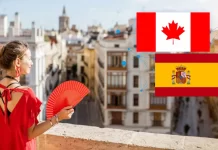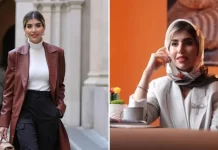
Folklore encompasses the expressive culture of a group, including oral traditions, arts, customs, and more. As a bridge to understanding diverse peoples, folklore provides a fascinating glimpse into cultures worldwide through common themes and unique practices.
Introduction
Folklore consists of legends, music, oral history, jokes, popular beliefs, fairy tales, stories, tall tales, and customs included in the traditions of a culture, subculture, or group. It forms an integral part of group identity. Folklore is also used to refer more broadly to the expressive culture shared within a particular population.
Folklore can contain religious or mythic elements, it equally concerns itself with the mundane traditions of everyday life. Folklorists have identified three forms of folklore that have played a crucial role in defining, identifying, and preserving shared identities: material, verbal, and customary lore.
Folklore provides a vital glimpse into human creativity and expression across cultures. It binds together communities and generations through common experiences, beliefs, customs, stories, and traditions. In the modern era, folklore continues to provide social currency, cultural identity, lessons for life, and entertainment just as it served similar functions in ancient cultures.
Types of Folklore
Folklore consists of a variety of forms and genres. While the most familiar types are oral traditions like myths, legends, and folktales, folklore also encompasses material traditions and customs.
Oral Traditions
Oral traditions make up one of the most common categories of folklore. They have verbally transmitted stories, songs, rhymes, and other lore passed down through generations.
Myths – Sacred stories concerning the origins of the world, humanity, death, and the gods. For example, Greek mythology remains influential today.
Legends – Stories regarded as historical though not verifiable. The legend of King Arthur is one of the most enduring European legends.
Folktales – Anonymous, fictional stories featuring animals or ordinary characters. Folktales often have a moral message. Cinderella is a classic European folktale.
Fables – Short allegorical tales that typically feature animal characters. Aesop’s fables are some of the most well-known today.
Jokes and Rhymes – Humorous stories, riddles, and rhyming verse circulated orally. Playground rhymes are a type of folklore.
Songs and Ballads – Musical lore and poetry preserved through oral tradition and community memory. Folk songs like “Greensleeves” have murky origins.
Proverbs and Sayings – Short, pithy phrases expressing wisdom and truths. “A rolling stone gathers no moss” is an example of a proverb.
Material Traditions
Folklore also encompasses the physical creations of a people. Material folk culture includes tools, clothing, artwork, buildings, and more.
Folk Art – Expressive, aesthetically distinctive art like quilts, carvings, or pottery made outside of academic traditions. Often passed down within regional or family groups.
Vernacular Architecture – Traditional home and structure designs using local styles, materials, and construction methods. For example, the thatched cottages of rural England.
Traditional Costumes – Clothing representative of a region or culture, like saris in India or kilts in Scotland. Can reflect wealth, status, or identity.
Woodcrafts – Wooden objects made according to local custom and utility like bowls, tools, toys, and utensils. Decorative woodcarvings also fall under folk crafts.
Textiles – Woven, embroidered, or stitched folk arts like quilts, blankets, baskets, and rugs made by hand or on simple looms.
Ceramics – Folk pottery and earthenware crafted by villages or families and featuring local styles, glazes, and firing methods.
Cooking/Cuisine – Traditional foodways, recipes, and ingredients of a region. Reflects available resources, cultural identity, and local taste.
Customs and Rituals
Practices, holidays, dances, games, and rites of passage also comprise folkloric traditions. These rituals and customs unite communities through shared experiences passed down intergenerationally.
Festivals – Calendar customs and celebrations tied to seasons, agriculture, or religion. Christmas and Chinese New Year are examples.
Dances – Vernacular dances intertwined with cultural history like the hula in Hawaii or flamenco in Spain. Folk dance steps are communally learned.
Games – Traditional games and sports that are informally handed down rather than competitively regulated. Hopscotch and jacks are children’s folk games.
Rites of Passage – Ceremonies marking major life events such as birth, coming of age, marriage, and death. Quinceañeras and bar/bat mitzvahs are examples.
Folk Medicine – Traditional remedies, cures, rituals, and beliefs concerning health and healing. Herbalism and traditional Chinese medicine qualify as folk medicine.
Superstitions and Magic – Beliefs and practices concerning the supernatural, luck rituals, and divination. Horseshoes above doorways and not walking under ladders reflect superstitions.
Holidays and Seasonal Rituals – Calendar-based cultural traditions. Common examples include Easter customs, Halloween practices, and Christmas traditions.
Common Motifs and Characters
Folklore, especially oral traditions, contains recurring archetypal characters and universal motifs across cultures:
Heroes
The brave protagonist who goes on a journey and overcomes adversity to save the day. Heroes are common in myths and legends around the world. Some examples include:
- Hercules (Greek/Roman)
- Arthur (British)
- Gilgamesh (Mesopotamian)
- Beowulf (Anglo-Saxon)
- Rama (Hindu)
Tricksters
A mischievous, roguish character who disobeys normal rules and conventional behavior but often ultimately brings positive change. Common tricksters include:
- Loki (Norse)
- Anansi (West Africa/Caribbean)
- Brer Rabbit (African-American)
- Coyote (Native American)
- Monkey King (Chinese)
Villains
The evil opponent the hero must overcome. Folklore villains include monsters, corrupt rulers, demons, and more. Examples:
- Medusa (Greek)
- Grendel (Beowulf)
- White Witch (Narnia)
- Fáfnir (Norse)
- Ravana (Hindu)
Gods and Goddesses
Powerful deities who control natural phenomena and human affairs. Present in many polytheistic belief systems. For instance:
- Zeus (Greek)
- Odin (Norse)
- Ra (Egyptian)
- Mazu (Chinese)
- Lakshmi (Hindu)
Magical Creatures
Mythical beings with supernatural powers. Dragons, fairies, unicorns, griffins, and mermaids are common worldwide. Region-specific examples include:
- Kitsune (Japan)
- Garuda (Hindu)
- Púca (Celtic)
- Tikbalang (Philippines)
- Impundulu (South Africa)
- Thunderbird (Native America)
Wise Elders
A mature, experienced mentor who shares guidance with the hero. This character represents the passing down of oral traditions and life lessons. Examples include:
- Merlin (Arthurian)
- Obi-Wan Kenobi (Star Wars)
- Hayyim (Jewish folklore)
- Nestor (Greek)
- Metaneira (Demeter myth)
The Rule of Three
A storytelling pattern featuring events happening in threes. This numerical motif adds rhythm, suspense, and satisfaction. Rule of three commonly applies to:
- Repetition – Events happening three times before resolution
- Descending order – Items listed from most to least important
- Ascending order – Items progressing from smallest to largest
Key Themes and Meanings
Beyond shared characters and motifs, folklore frequently explores universal themes, lessons, and meaning relevant to human existence across cultures:
Good vs. Evil – Most myths, legends and folktales deal with struggles between good and evil forces. Heroes fight villains; gods overcome demons. These stories reaffirm moral values.
Wisdom and Experience – Folklore often values aging and elders who pass down knowledge. Proverbs, legends of wise figures, and elder mentors highlight the importance of intergenerational wisdom.
Love and Romance – Tales of romantic love, like Tristan and Isolde, resonate in folklore worldwide. Stories of love lost, tested, and won reflect universal human bonds.
Death and the Afterlife – It help explain the mystery of death through myths, funeral customs, and beliefs about mortal souls journeying to an afterlife.
Nature and the Elements – Personification of natural phenomena as gods or spirits appears globally. Folklore explores humans’ connection to nature.
Community and Family – Strengthening social bonds is a key function of folklore. Tales of heroic ancestors, common holidays, origin legends, and customs solidify community.
Morality and Life Lessons – Stories rewarding virtue and punishing vice reinforce moral standards. Cautious tales warn against dangers to teach safety.
Through exploring these shared themes, this grants insight into the human condition, imparts wisdom, and affirms values across generations and cultures.
Importance and Meaning of Folklore
Beyond entertainment, folklore serves vital societal functions and meanings:
Cultural Identity
Folklore connects people to their shared heritage and background. Tales of common ancestors, heroes, foods, dress, music, and customs provide a sense of identity and belonging. Folklore offers a touchpoint linking past and present.
Social Currency
When groups share and participate in folk customs together, from festivals to dances to games, it strengthens community solidarity. Folklore acts as social glue binding generations. Retelling oral traditions also reinforces group cohesion.
Life Lessons
The themes, morals, and wisdom embedded in folktales, legends, and proverbs teach values, offer prudent advice, and provide role models for life skills. Folklore imparts important lessons through memorable stories.
Entertainment
Of course, It also provides amusement, enjoyment, and recreation. The fanciful characters, suspenseful plots, and imaginative worlds of myths and folktales excite the imagination and provide entertainment.
By serving these functions, folklore allows groups to maintain cohesion and identity across generations. Through its creativity and expressiveness, it offers insight into human intellectual achievement. It documents the human experience and touches on universal themes, granting it ongoing relevance even as cultures evolve.
Documenting and Preserving Folklore
Due to its oral traditions, It can be transient and vulnerable to extinction. However, concerted efforts have long documented folk expressions to preserve cultural heritage.
Oral Tradition
Passing down folklore orally from elders to youth remains an important preservation method. Though malleable, oral transmission instills folklore with adaptability and continuity. Customs kept alive through practice also resist decay.
Written Records
Writing down oral traditions in books, anthologies, and transcriptions has historically preserved fading folklore. The Brothers Grimm and other ethnographers collected and published folktales and customs. Accuracy may be questionable, but documentation resists loss.
Recordings
Audio and video recordings of storytellers, musicians, craftspeople, and rituals document folk culture. Recordings capture intangible qualities like dialect, music, and setting atmospheric elements may be lost in written transcriptions.
Institutions
Museums, cultural centers, universities, and libraries provide institutional support for folklore preservation through research, collections, exhibits, and programming. For instance, the American Folklife Center in the Library of Congress.
Cultural Revitalization
Grassroots efforts help revive waning traditions, sometimes aided by technology. Indigenous groups increasingly use social media to share and rekindle oral lore and practices. Some governments also invest in reviving folk heritage.
Preserving folklore is an evolving process. Practices fade over generations, but committed documentation and cultural investment keep heritage alive while allowing traditions to organically evolve to suit modern communities.
Conclusion
The captivating world of folklore offers a lens into the heart and soul of cultures worldwide. These creative expressions of human imagination, beliefs, values, and identity provide social currency and continuity across generations while exploring universal themes through the compelling traditions, characters, and tales passed down intergenerationally. By understanding a people’s folklore, we better understand our shared humanity. Ongoing preservation and cultural exchange promote appreciation and revival of these valuable living heritage practices worldwide.
Also Read: HEALING POWER OF HAPPY ENDING MASSAGE NEAR ME
FAQs about folklore:
Q1: What is folklore?
It refers to the traditional stories, customs, beliefs, songs, sayings, and art forms preserved and shared among a group of people. It encompasses a wide range of oral and physical creative expressions passed down through generations.
Q2: What are the main types of folklore?
The major types of folklore include oral traditions like it, myths, legends, music, jokes, rhymes, and sayings. Material folklore includes traditional arts and crafts, clothing, costumes, dances, foodways, and structures. Customary folklore consists of practices, rituals, festivals, games, medicine, and other living traditions.
Q3: What makes folklore different from literature?
Unlike formal literature, It arises from and belongs to the common people. It circulates orally rather than through print and often has multiple variations. Folklore has unknown origins, while literature credits specific authors. Folklore constantly evolves, whereas literature is fixed.
Q4: Why is it important to the culture?
It is extremely important to culture because it transmits knowledge and identity. Shared heritage and traditions in folklore provide communities with a sense of belonging and solidarity. Folklore also teaches values, offers entertainment, and preserves history.
Q5: How does it differ around the world?
While similar archetypes and motifs appear globally, folktales take on the unique flare of their origin cultures. Every region has its folk heroes, mythical creatures, tricksters, villains, and wise elders appearing in local legends and lore. Stylistic elements also differ.
Q6: How has technology impacted the preservation of folklore?
Technology provides new ways to document and share fading it. Recording oral traditions, digitizing archives, building online collections, and spreading traditions through social media help expand access and preserve intangible heritage. However, authenticity can suffer.
Q7: Why study it today?
Understanding it provides insight into different worldviews, values, and ways of life. Folklore helps strengthen cultural diversity in an increasingly interconnected world. It also aids the preservation of endangered cultural knowledge and expressions.
Q8: How can I learn more about it?
Great ways to learn include reading folklore anthologies, visiting cultural institutions like museums and heritage centers, watching documentary films, listening to field recordings, experiencing festivals and traditions, and talking to tradition-bearers in communities.
Q9: What is applied?
Applied it involves putting academic folklore research into practice to serve public needs. This includes cultural conservation, heritage policy development, educational programming, cultural arts promotion, and more.











